PASCAGOULA — As Mississippi grapples with a deepening workforce shortage, leaders in Jackson County are looking to high school classrooms for solutions.
According to the U.S. Chamber of Commerce, the Magnolia State has only 49 available workers for every 100 open jobs. The county’s educators are tackling that gap with career and technical education programs — including courses where students are learning to weld, wire and repair engines before they’re old enough to vote.
“The world right now is in need of people, hands-on, working in a shop, and this class very much so prepares you for it,” said Lane Necaise, a sophomore in the automotive program at Vancleave High School. “(My instructor Nic Wages) has taught me pretty much everything I know about cars. I had some basic knowledge at first, but everything — from starting and charging, brakes, engine performance, everything — he goes through it all and teaches you down the lesson and prepares you for the (Automotive Service Excellence certification) tests.”
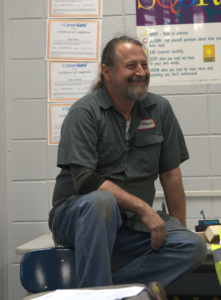
Programs like this are gaining support through initiatives such as the EquipMS Grant, which was established by the state Legislature in 2023. The grant helps schools modernize, replace or enhance career and technical education programs, especially those that align with regional workforce needs in manufacturing, industrial maintenance, energy and construction.
Wages, Necaise’s teacher, said these programs address a growing challenge.
“The mechanical aptitude of our society has dropped, and that’s one of the biggest reasons why the (career-tech) classes like this are so important,” he said.
Education meets workforce demand
Steven Covington, director of the Jackson County Technology Center, said these programs are designed to support students as well as meet local workforce demand.
“We try to find stuff that — if our students want to stay here and live in Jackson County — there’s plenty of opportunity here for them,” Covington said. “But also, if they want to move off, we want to give them opportunity wherever they want to be.”
According to AccelerateMS, the state workforce development office, Mississippi’s biggest labor gaps are in medium-skilled jobs — roles that require more than a high school diploma but less than a bachelor’s degree. While two-thirds of Mississippi’s jobs are medium-skill in nature, only 37% of the workforce qualifies for them.
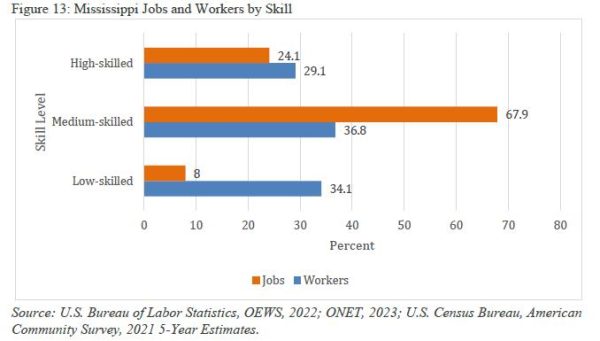
Sondra Collins, senior economist for the Mississippi Institutions of Higher Learning, said recruitment for jobs like plumbers, HVAC technicians, electricians and forklift operators has been overlooked for nearly two decades — and the impact on the state is imminent.
“Now, (current workers) are retiring,” Collins said. “You need to have your car fixed, but you can’t, or you need a plumber, and you have to wait a week because there’s a shortage — and that’s a really big problem.”
State workforce development staff projected an annual job opportunity growth of 500 pipefitters and shipfitters per year in south Mississippi, according to Covington.
To meet the demand, Jackson County School District officials are expanding hands-on training to 20 programs, including shipfitting and pipefitting — the first program of its kind in the state — with funding from a nearly $29,000 EquipMS Grant.
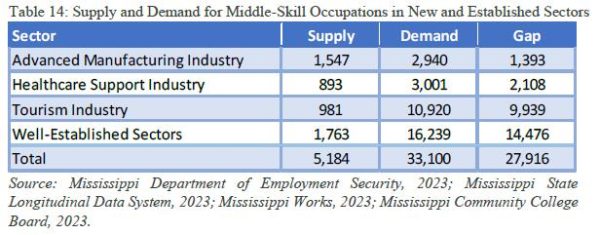
Covington said current programs are also expanding to match growing student interest. St. Martin and East Central high schools will soon house new electrical and aquaculture programs, and the future may bring sports medicine and public safety programs.
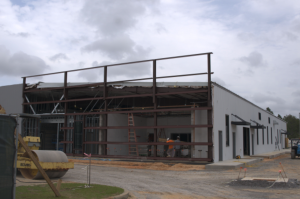
Students train for high-demand careers
Students typically start as sophomores and earn certifications by their junior year. Most Jackson County programs include tests like the National Center for Construction Education and Research certification.
“The state has been really big lately on making sure they have certifications outside these classes,” Covington explained.
This training infrastructure is built around an industry-school partnership — creating a pipeline of skilled labor for area employers.
“Imagine … you have this company that could hire eight of these high school graduates, but they decide to hire eight students from somewhere else. That destroys the pipeline, destroys the program, and so you want the companies to be invested in hiring the students in that area,” Collins said.
Chevron is one of several companies working with schools to build career pathways. Through its Ambassador Program, Chevron employees visit local schools to explain how students can prepare for jobs within the company.
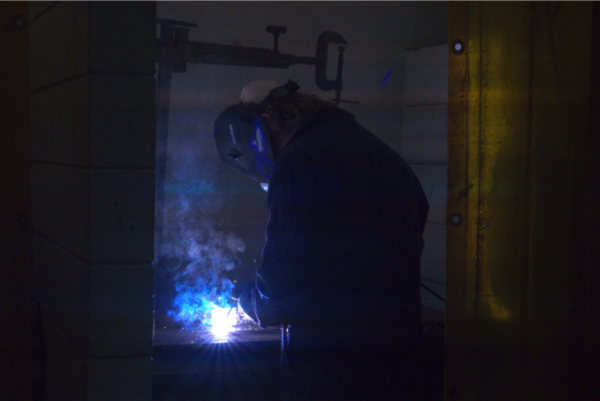
“Industries and schools partnering is such a crucial aspect because, when you have your industry professionals that can coordinate with teachers and say, ‘These are the things that we are seeing in the workforce as a gap, things that we need,’ then you have a situation where the school is directly preparing students to be successful in employment down the road,” said Katarina Scott, an external affairs representative for Chevron.
Scott added many local students don’t realize the corporation’s largest oil refinery is in their backyard.
“If they don’t know it’s there, they don’t know the high-paying career paths that are available to them,” she said. “The younger that we can connect with students and let them start thinking about career exploration and exposing them to companies that are in the area, the better chance that we have that, when they’re ready to go into full-time employment, they’re going to choose to stay here in Mississippi.”
Schools and industries partner for success
The Mississippi Gulf Coast is also seeing growth in emerging industries. One area of development is unmanned systems, or land, sea and air vehicles that operate without a human operator onboard. Running those vehicles requires expertise in, among other items, advanced mapping and machining.
Covington said the Jackson County Technology Center hopes to soon add an unmanned systems program. A similar program launched last year at the Hancock County Career and Technical Center to teach hydrography, which is ocean-floor mapping.
Instructor Jennifer Phillips said there are plenty of academic experts in the field but not enough technicians.

“There were a lot of people who were willing to be in the office and work with the data that was being brought in, but not as many that were willing to go work with the equipment, actually collect and survey, and so that (is) where the technical side comes in,” Phillips said.
Companies like Ocean Aero, which relocated from San Diego to Gulfport in 2021, are hiring students from the region to help build and maintain unmanned watercraft. The company works with the University of Southern Mississippi’s GenSea program, which introduces high school students and teachers to jobs in the field.
“Ocean Aero is proud to have sourced the majority of their Mississippi team members from the surrounding communities on the Coast,” read a statement from the company.
New programs reflect future growth
Collins said building out high school programs will eventually strengthen the state’s economy. Students who learn technical skills in high school may go on to launch businesses and attract new industries.
“You get organic companies that come in, and now maybe a factory wants to come in and build air conditioning where this great HVAC company is,” she said. “I think this is a good step for rural areas — to really think about the infrastructure that they have, think about the needs that they have and really pour into those high school students.”
She said career-tech programs also give students an option outside of college.
“Without the CTE programs, and without just the knowledge of what your other options are, you get those students who just feel like, ‘I’m not college material — that’s just not for me.’ And they end up with jobs where they only need a high school diploma, but those jobs don’t necessarily pay well,” she said. “Anytime people aren’t meeting their full potential, the state’s economy isn’t meeting its full potential.”
For students like Necaise, exploring potential job fields has him imagining what comes next.
“I wanted to go into some kind of engineering. But then, after taking these harder math classes, I’m like, ‘mmm, maybe not,’ … maybe (I’ll do) something a little bit more my speed, something hands-on at Chevron, or maybe at the shipyard,” he said.